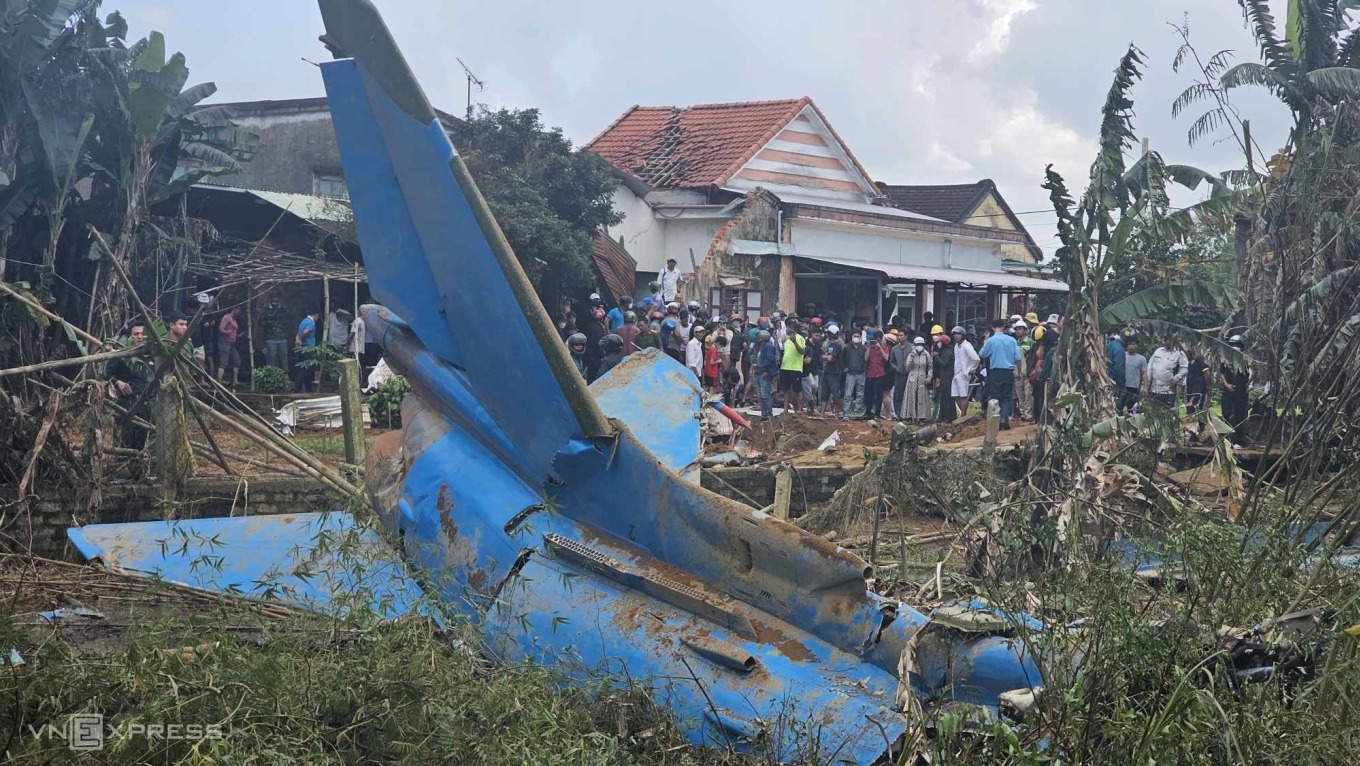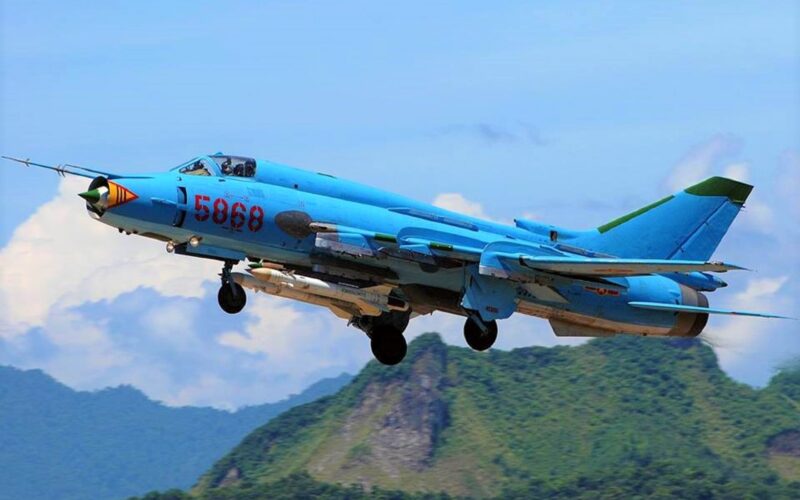A Vietnamese Air Force Su-22 fighter jet crashed during a routine training exercise in central Quang Nam Province on the morning of January 9.
The mishap unfolded around 11:15 AM in the Binh Minh neighborhood of Dien Ban Town, leaving a trail of property damage and causing minor injuries to a resident.
The pilot, identified as Captain Do Tien Duc, managed to eject safely from the aircraft, escaping unharmed. However, the crash led to collateral damage, including the injury of a nearby resident.
The Ministry of National Defense confirmed the incident and stated that Captain Duc encountered technical difficulties ten minutes after taking off from Da Nang Airport.
Following the established protocols, Captain Duc steered the Su-22 away from populated areas before parachuting approximately 19 kilometers from the runway. The fighter jet, belonging to the 372nd Air Force Division, ultimately crashed in a vacant lot, landing about 10 meters from a house and causing damage to its roof.
A concise update from the Military Command of Quang Nam province is that the crashed aircraft has been recognized as a Su-22 bearing the serial number 5880.
Debris from the crash scattered across the area, resulting in injuries to a resident who happened to be working in their garden. The injured individual was promptly treated for minor injuries at Vĩnh Đức General Hospital.

Emergency response teams were rapidly deployed to the crash site, including firefighters, ambulances, and military personnel. Authorities cordoned off the area, instructing residents to stay indoors as investigations into the incident’s cause began.
While initial reports suggest a possible loss of control as a contributing factor, a definitive explanation is still pending. Authorities are working diligently to determine the precise events leading to the crash.
The Vietnamese Ministry of National Defense assured the public that a thorough investigation is underway, and further updates will be provided as information becomes available.
Ongoing Challenges
This incident involving the Su-22 fighter is not the first time such an aircraft has been part of an incident in the country. In 2015, a Su-22 operated by Vietnamese forces ditched into the South China Sea, but fortunately, the pilots successfully ejected.
However, in 2018, another Su-22 accident claimed the lives of two pilots when the plane crashed in Vietnam. Similarly, in January 2023, a Su-22 crashed near Yen Bai airbase in the northern part of the country during a landing attempt after a training mission, resulting in the tragic death of the pilot.
The current aircraft fleet of the Vietnamese People’s Army (VPA) primarily comprises planes developed by the Soviet Union. Military pilots in the VPA operate Sukhoi Su-30s, Sukhoi Su-27s, and Sukhoi Su-22 aircraft.
The Su-22, an export designation for the Sukhoi Su-17 series developed during the Soviet era, has been in active service since the 1970s.
The Air Force’s inventory includes several outdated airframes, such as the Su-22, with many nearing the end of their operational life.

Vietnam’s pilot training program has also been scrutinized, with journalist Nguyen Dinh Am highlighting the rarity of training opportunities due to budget constraints and fuel shortages.
Nguyen noted that a combination of ancient aircraft, suboptimal maintenance, and pilots with diminished flying reflexes due to limited practice could potentially lead to mistakes and accidents.
In addition, experts have expressed concern over the reluctance of the Air Force to utilize more advanced and expensive aircraft like the Su-27 for training purposes, exacerbating proficiency issues among pilots.
A study disclosed that Vietnamese Air Force pilots primarily rely on virtual flight rules and radar vectors in ideal weather conditions, lacking experience in adverse weather situations.
Meanwhile, Vietnam has prioritized maintaining and overhauling Su-30MK2 multi-role jet fighters. The nation is also actively exploring options to modernize its air force, with reports in 2021 suggesting interest in acquiring Russia’s fifth-generation Su-57 fighter jet.
However, following Russia’s invasion of Ukraine, the possibility of Vietnam acquiring Russian weapon systems has diminished due to the fear of the potential imposition of US-led sanctions on the country.
In a significant move, Vietnam ordered twelve US-made T-6 jet trainers in late 2021. Vietnamese pilots have since commenced participation in US training programs, with ongoing talks also indicating a potential acquisition of F-16 fighter jets from the United States.
On the other hand, China has expressed displeasure through state media, labeling any such deals as attempts to sabotage peace and stability in the region.
- Contact the author at ashishmichel(at)gmail.com
- Follow EurAsian Times on Google News




